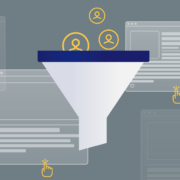Why the Right Email Marketing Strategy is Good for Business

Is email the right way to promote your business? Digital marketing has evolved over the last decade, but modern email marketing is a strategy that your business can’t afford to overlook.
Email marketing is among the oldest forms of digital marketing—but it’s far from outdated. While there’s a significant focus on social media today, email marketing plays a vital role in fulfilling your organization’s marketing strategy.
Investing in digital marketing is one of the most attractive strategies for businesses. Research by Validity highlights that the expected ROI of email marketing has increased to approximately $38 for every dollar spent. However, this isn’t the whole story. Email marketing holds great potential, but businesses need to implement strategies that work in today’s competitive landscape.
How can a business ensure that it’s making the most of its email marketing strategy? By understanding the current marketing trends that allow email marketing to remain a competitive strategy in the always-changing world of digital marketing.
Email marketing is just one part of a larger strategy
Understanding your global digital marketing strategy is essential to unlocking the benefits of email marketing and getting the most value from it. You need to be able to place your email marketing strategy within the context of your overall efforts.
Lead generation and lead nurturing are two areas that most email marketing strategies focus on. Email marketing can be an effective tool for lead generation when used in tandem with other practices. However, the true power of email marketing strategy lies in lead nurturing.
Once leads are generated, transforming them into successful conversions is still a considerable challenge. Lead nurturing is the process of establishing and building a relationship with leads. Email provides a unique opportunity for lead nurturing, letting you reach out directly to potential customers and carefully tailor your strategy to specific audiences and individuals.
According to the Content Marketing Institute’s research, email marketing is the most consistently effective method for lead nurturing, with 31 percent of marketers citing it as the highest-performing strategy for their brands. Taking a deliberate approach to email marketing can help build leads into paying customers, improving conversions and increasing the overall efficacy of your marketing efforts.
Targeted campaigns have greater impact
Email marketing is most effective when it is used to reach out to carefully targeted audiences. Indiscriminate campaigns can have much lower engagement than campaigns that align with an audience’s needs and intentions. Consumers also share this point of view. Research from Dynamic Yield shows that 55 percent of consumers prefer communications uniquely targeted to their needs.
Before you can target potential customers with email marketing, your business needs to acquire their email addresses. There are many possible methods to do that, including:
- Discounts and incentives
- Email receipts
- Loyalty programs
- Newsletters
- Access to guides, e-books, etc.
Besides helping to establish your list, these sources accomplish two things: they signal intent and indicate where the lead is in the customer journey when they submit their email. Knowing these two things means businesses can use specific email marketing strategies to target groups based on segmentation, such as level of interest, repeat customers or products and services they show interest in.
These segmentations make creating and customizing your emails with calls to action, personalization, connection and media that fuels engagement possible.
Calls to action make conversion easier
A call to action (CTA) is a fundamental component of just about every type of marketing, and email marketing is no exception. CTAs allow your audience to take the action you choose. Depending on the goal of your messaging, the CTA will prompt the reader to buy, subscribe, sign up or perform some other step that takes them further along the customer journey.
Without a CTA, email marketing doesn’t have the same impact. It can inform customers, but a CTA is a vital link between interest and action. An ineffective CTA is nearly as bad as having no CTA at all. Sending your audience to your website home page when you want them to sign up for a newsletter adds steps people are unlikely to take.
Carefully determining the number, nature and placement of CTAs is also crucial. More CTAs in individual emails provide more opportunities for a potential customer to take action. However, proper placement is essential. Having a single CTA at the bottom of an email means that readers can only take action if they get to the end. Several CTAs spread throughout your message deliver better results by providing more frequent and earlier opportunities for readers to the next step.
CTAs should be engaging in terms of both design and content. For example, having an attractive button instead of a simple plain text link can go a long way. Improving the CTA copy can also increase engagement, especially when incorporating personalization. Research from HubSpot shows that an adaptive CTA that changes based on user data can as much as triple the conversion rates compared to default CTAs.
It’s not just the CTAs that need personalization. Using customer data to customize emails to individuals gets better results.
Email personalization helps reach customers
Personalization is one of the most important aspects of developing a successful email marketing strategy. Potential customers are much more likely to respond to campaigns with personalization that transform stale, generic communications into a truly engaging experience.
There are many ways to personalize campaigns for individual recipients or broader audience segments. Conventional email marketing might include personalization only in an email’s opening line, but implementing personalization at other points can significantly improve results. Research by Netcore shows that email open rates can double in specific industries by implementing personalized subject lines.
Instead of generic sales emails, your brand can tailor messaging to match the intent of recipients. For example, your lead nurturing efforts are more effective when your emails contain content targeted to where leads are generated, such as through discount offers, newsletter sign-ups or sales inquiries. When segmenting by intent, you’re ensuring that those leads eventually turn into successful conversions.
When a potential customer receives a customized email, it creates a personal connection. As a result, the email becomes part of a more meaningful interaction rather than an automated marketing effort. Along with using recipient names, personalization can also focus on the audience and why they connected with the brand in the first place.
Authentic communication builds a real connection
Email marketing isn’t just a simple way to reach out to potential customers about deals or new products. It can also be integral to building your brand and developing a genuine relationship with your customers.
With email marketing, you can craft a narrative around your brand and your products and services. Capture your brand’s story by taking the opportunity email marketing provides to share the motivations and meaning behind what you do. Going beyond pricing and product details tells your audience why they should set out on the customer journey with your company.

A study by a firm called The Oval Office shows that building authentic connections and demonstrating empathy is more important for brands than ever. Consumers who see a brand as displaying genuine empathy are 2.8 times as likely to buy and 3.4 times more likely to develop a lasting relationship. The versatility and personalization of email make it an ideal tool for demonstrating empathy to your audience.
The right media and content enhance engagement
Email marketing is no longer a letter with simple, plain-text messaging. Instead, brands rely on many types of rich media content to improve engagement and turn leads into conversions. At the very least, brands should include their logo and corporate branding elements to increase the professionalism and appeal of their communications.
Images are a straightforward way to enhance emails and build an emotional connection with recipients. A picture lets your brand quickly communicate the tone of your message during the critical first seconds after opening.
Videos are another asset that can improve email content when appropriate. For example, videos allow more control over tone and pacing than text or images. This ensures your message comes through as intended without misinterpretation.
Emails can also contain various interactive elements that promote even higher engagement. For example, simple interactive design elements such as accordions and rollover effects can allow for much more dynamic content. Innovative preview features can even start the sales process directly in the email.
Interactivity is one area that consumers respond to, but most brands haven’t mastered it quite yet. In a survey by Litmus, 91 percent of consumers responded that they prefer interactive content in emails. However, just 17 percent of marketers are taking advantage of this for their brands.
A deliberate approach makes for efficient marketing
Implementing email marketing requires a deliberate and calculated approach if your business is going to succeed. There are many different ways that you can use email marketing to reach out at various points throughout the customer journey.

Some of the most common methods include:
- Automating email campaigns to drive a sales funnel
- Warming cold leads for your inside sales team
- Getting potential customers to self-qualify
- Reaching out to customers who abandoned the sales process
- Driving repeat business with incentives and offers
There isn’t a one-size-fits-all solution to email marketing. Instead, any approach must be carefully targeted to a company’s overall marketing strategy, specific products or services and ideal customer base.
Marketing analytics plays a vital role in understanding what works in email marketing and what doesn’t. As a result, businesses must be able to adjust their strategy in response to the results that data generates. Some of the most critical areas of email marketing focus on metrics such as the average open rate, average clickthrough rate and average unsubscribe rate.
According to Mailchimp, the average open rate for marketing emails is 22.71 percent, the clickthrough rate is 2.91 percent, and the average unsubscribe rate is 0.25 percent. Of course, these values will vary by industry, but this shows the general range in which email marketing operates.
Many businesses tend to misinterpret these analytics, which is why Mindspin explains these benchmarks in client analytic reports to provide a more accurate picture.
Email marketing provides unique opportunities
Email marketing is a powerful tool requiring a carefully crafted approach. Committing long-term to building an effective strategy may not seem like a good idea, but email marketing delivers numerous benefits for your brand, including increased marketing ROI across multiple channels.
Keeping your brand fresh in the minds of your audience is email marketing’s strength. It’s an essential tool at every step of the customer journey, whether making the first connection or keeping regular customers up-to-date. Even with the rise of social media, email marketing remains the most consistent method to reach customers. In fact, Statistics Canada reports that 85 percent of teens and adults use email versus just 70 percent for social media.
Making the most of email marketing with Mindspin
Email marketing is a powerful strategy to promote your brand. However, your company can only realize that potential with a professional approach that includes testing new methods, tracking results and adjusting your strategy accordingly. Entrusting your email marketing strategy to a professional ensures your email marketing gets results.
Reach out to Mindspin to start creating a carefully tailored email marketing strategy for your brand. Working with a marketing agency to address your email marketing needs can help your business grow faster, increase conversions and make the most of your existing customer base.
Tanja Groos, Founder and CEO, Mindspin® Studio Inc.
Tanja Groos is CEO Mindspin with more than 20 years of experience in branding and digital marketing. Her work has been published and awarded. Her leadership has tripled sales within a year, surpassed top industry competitors online, and enhanced brand credibility for her clients.
Follow Tanja on LinkedIn












